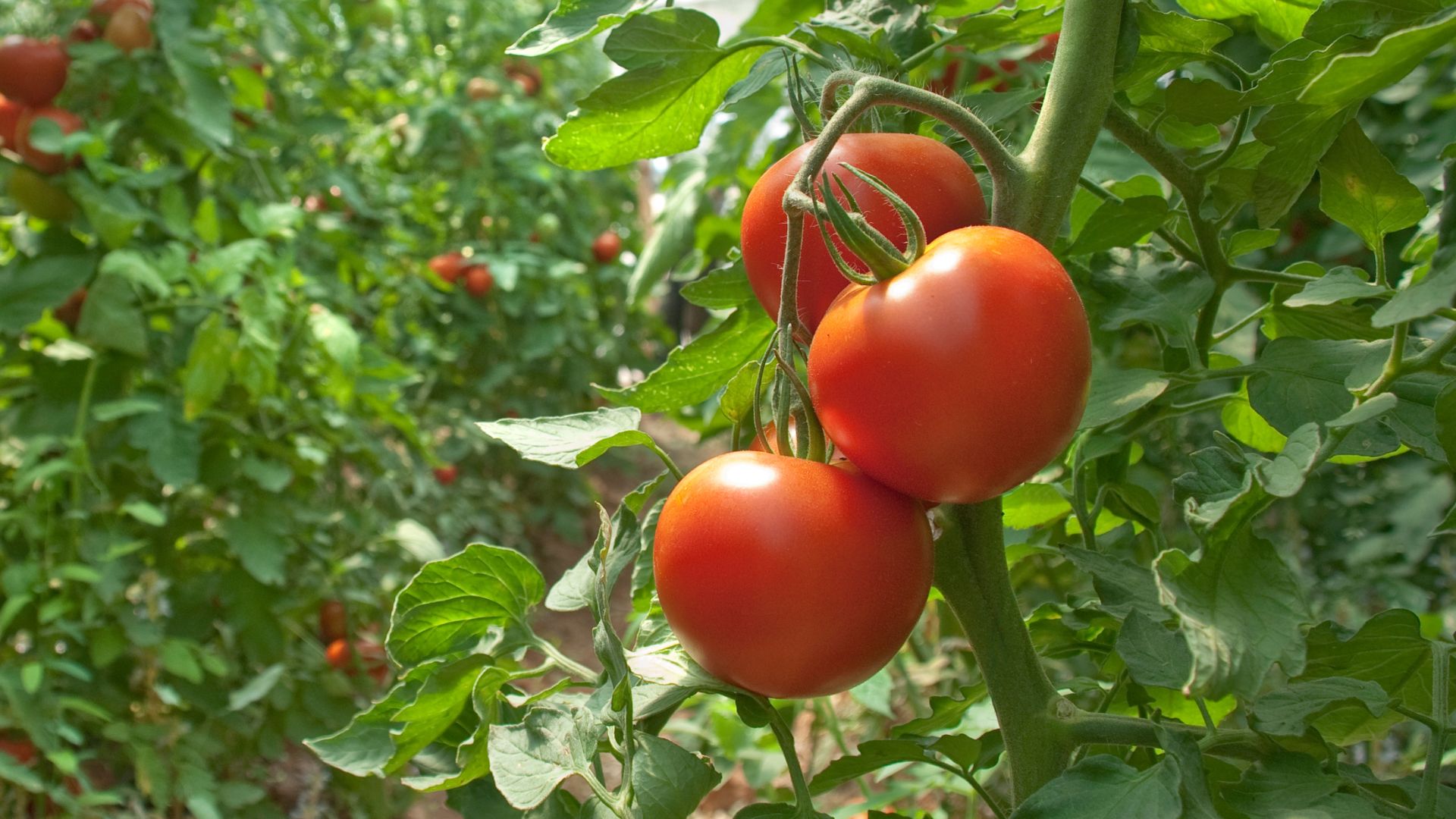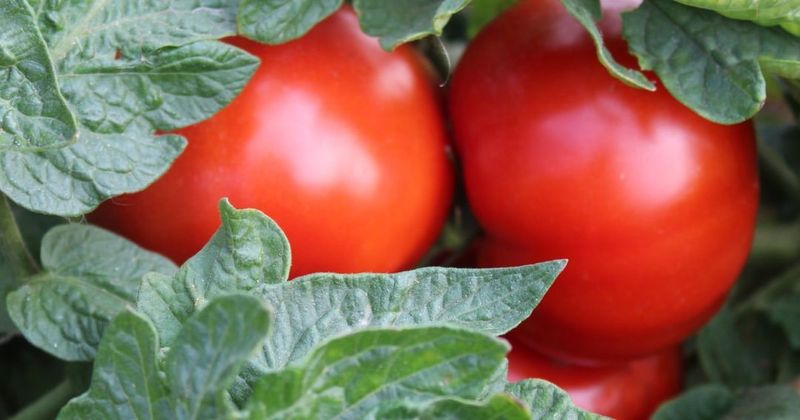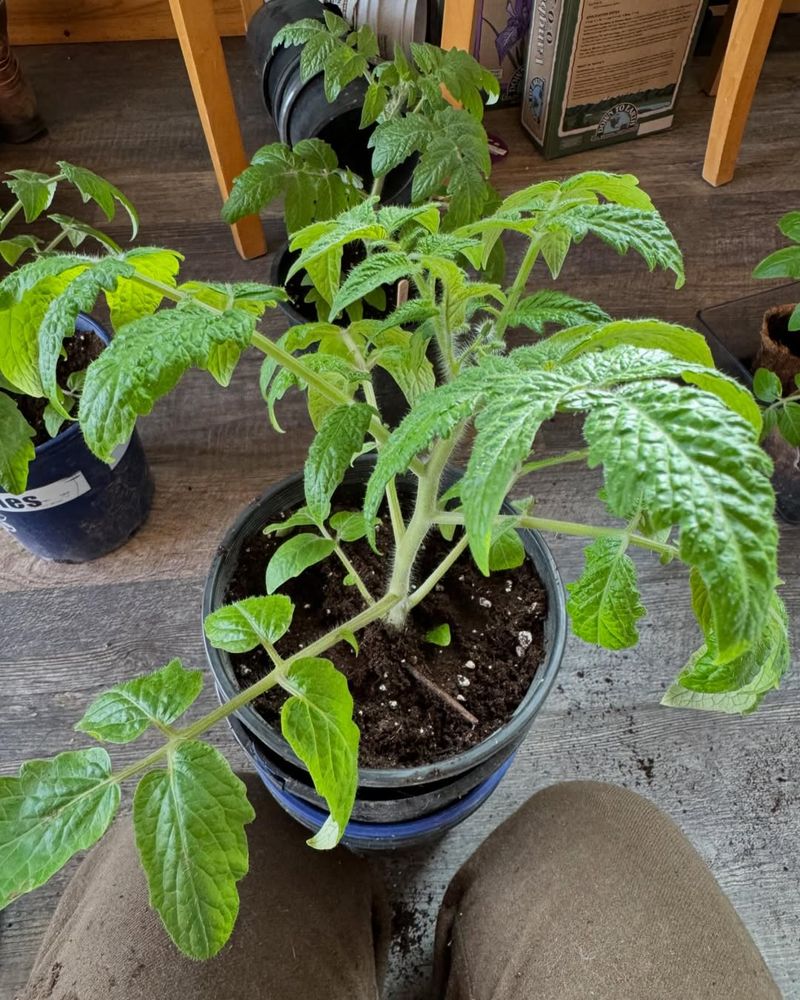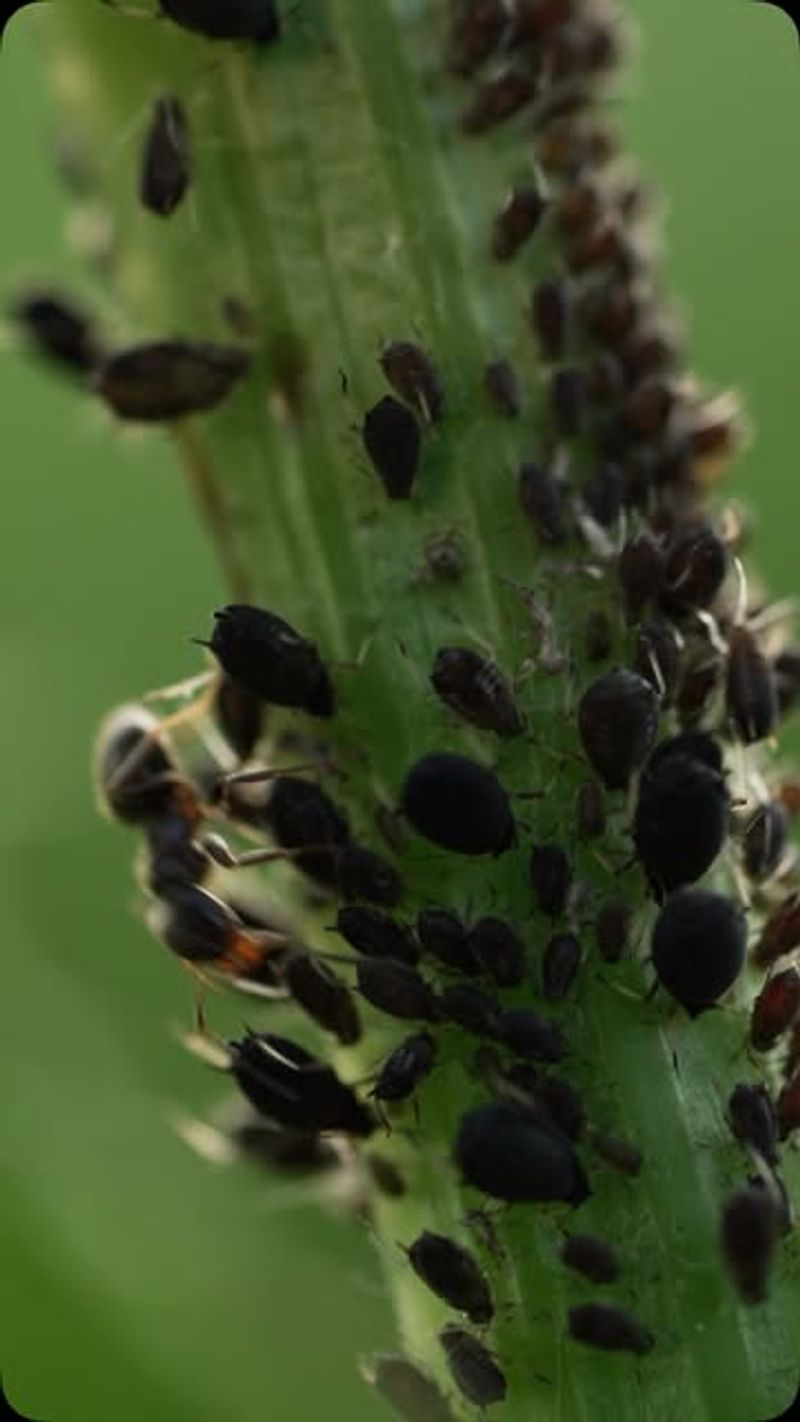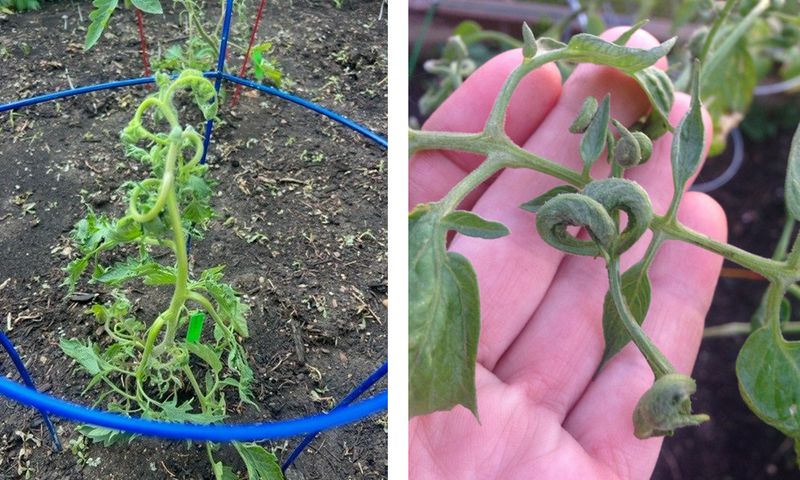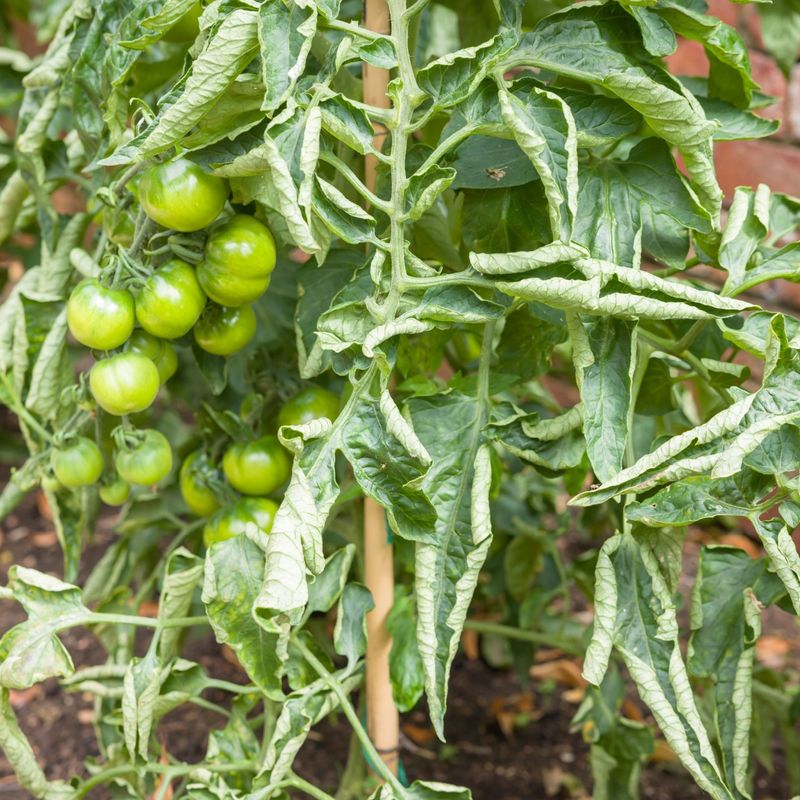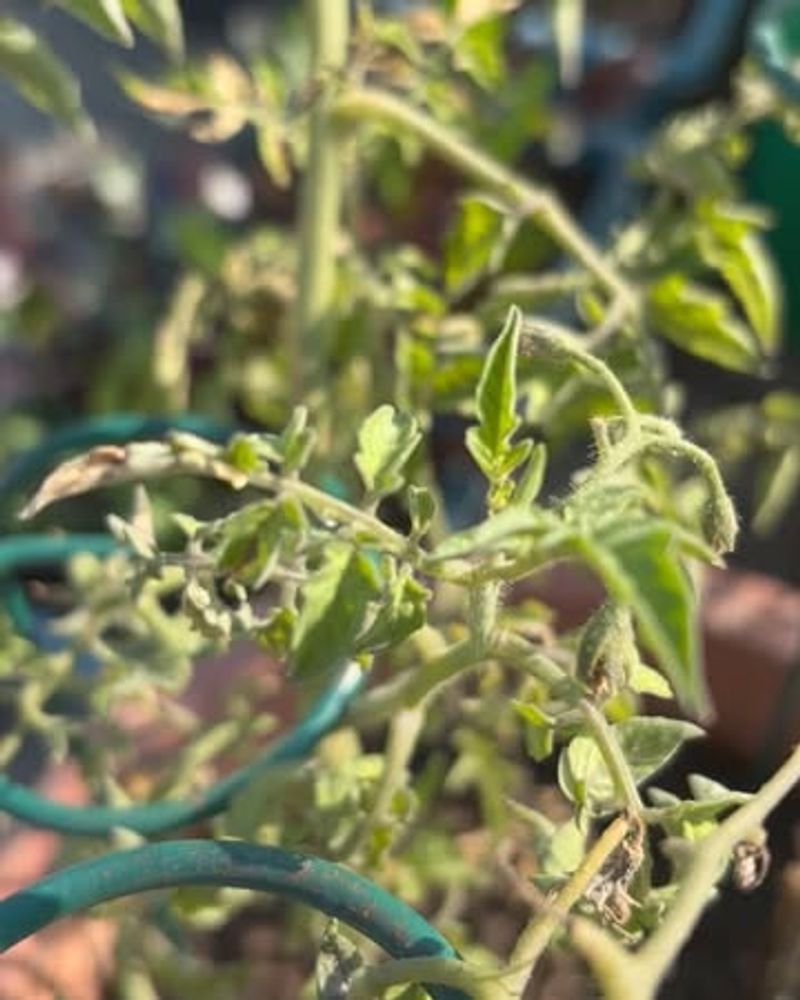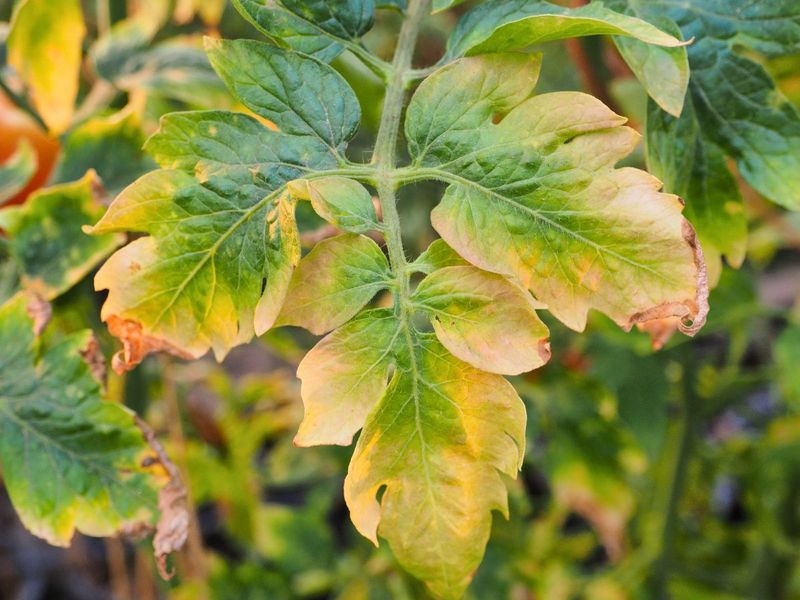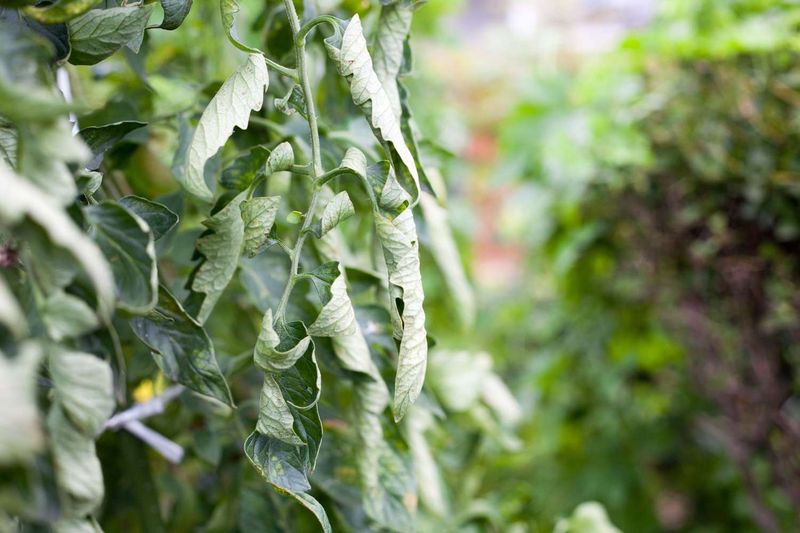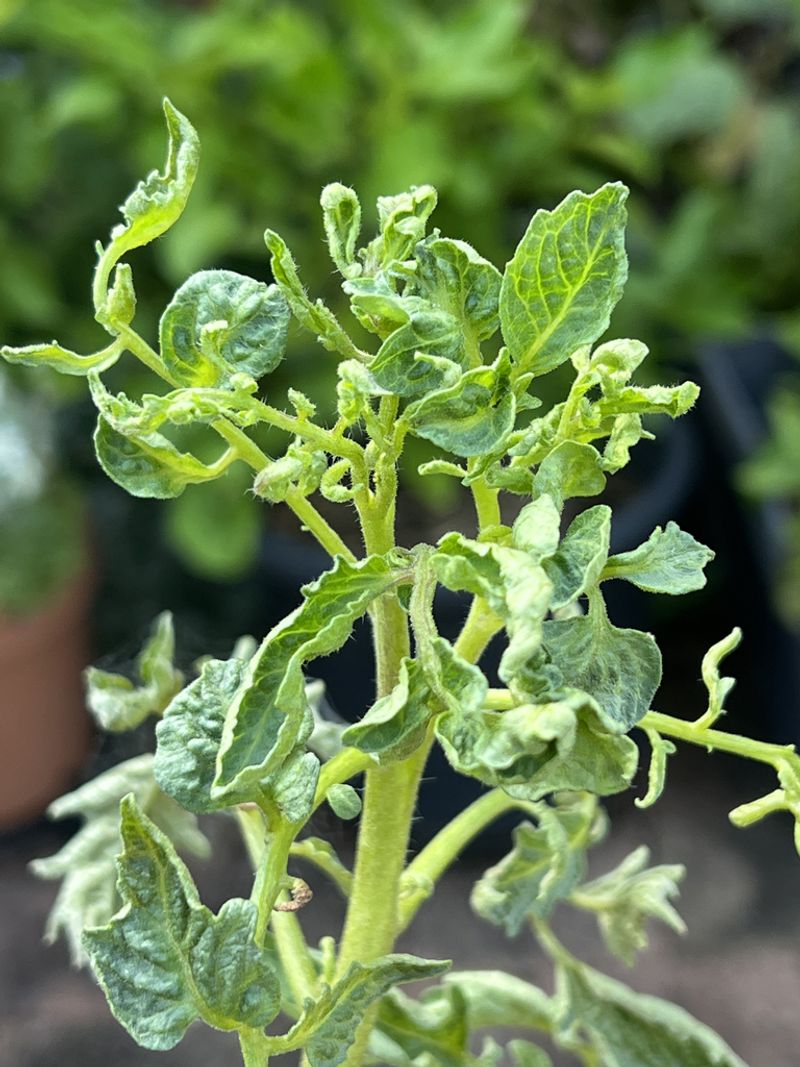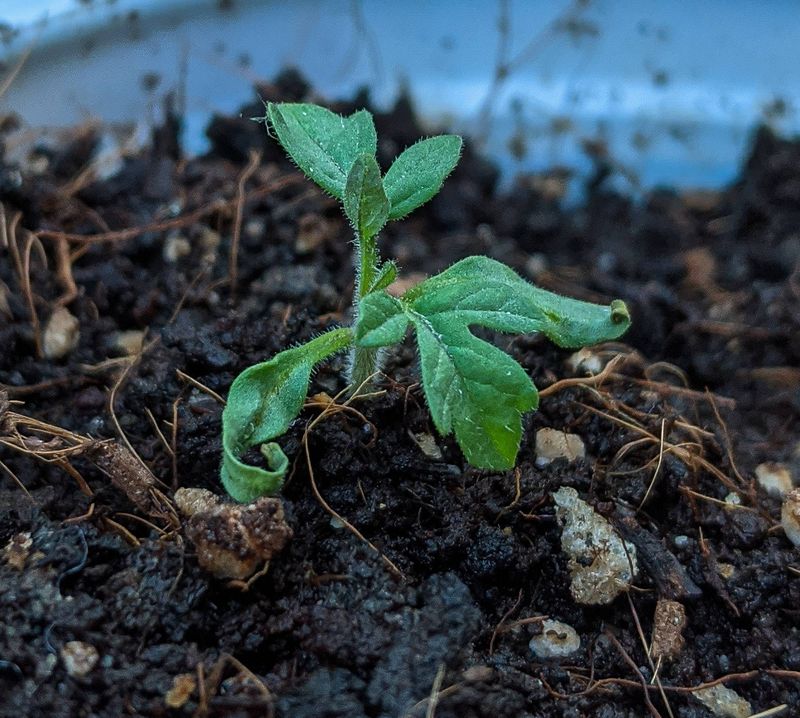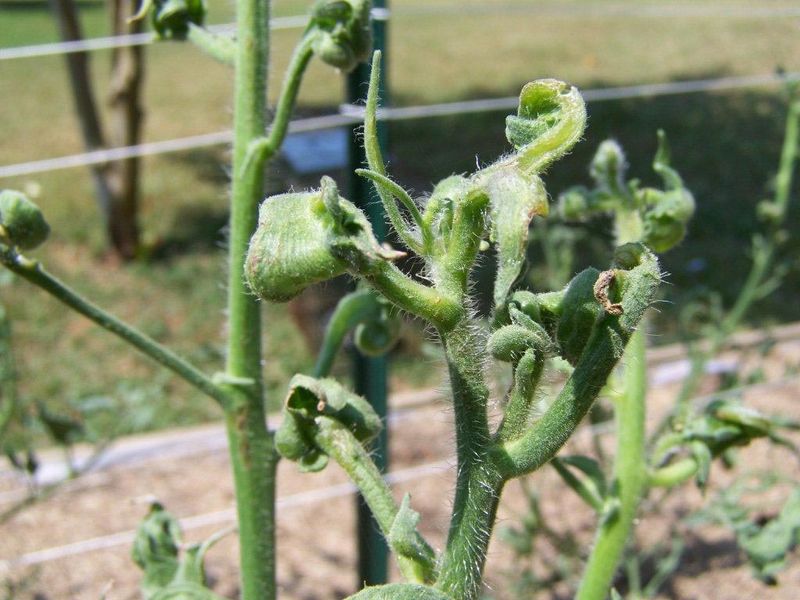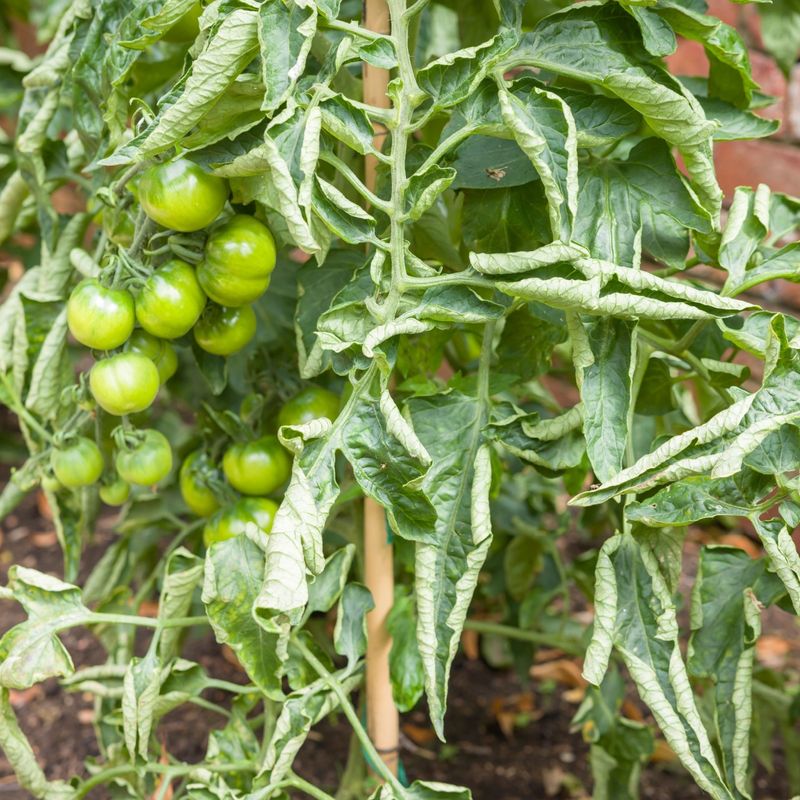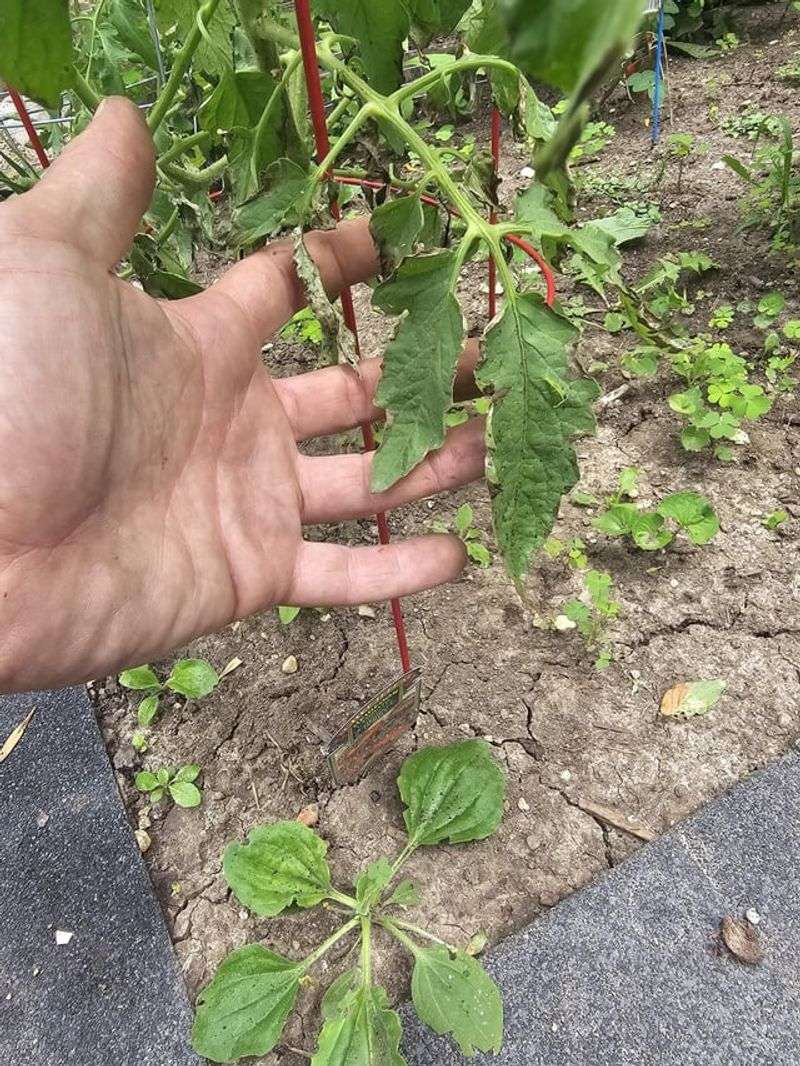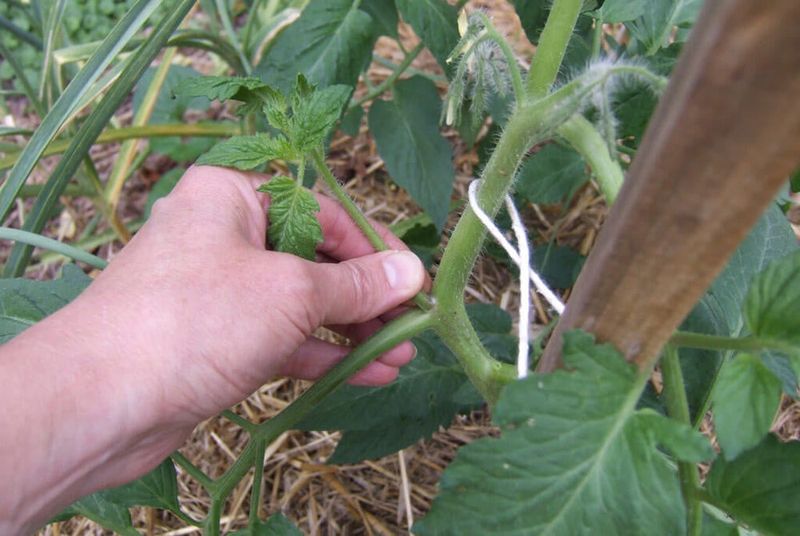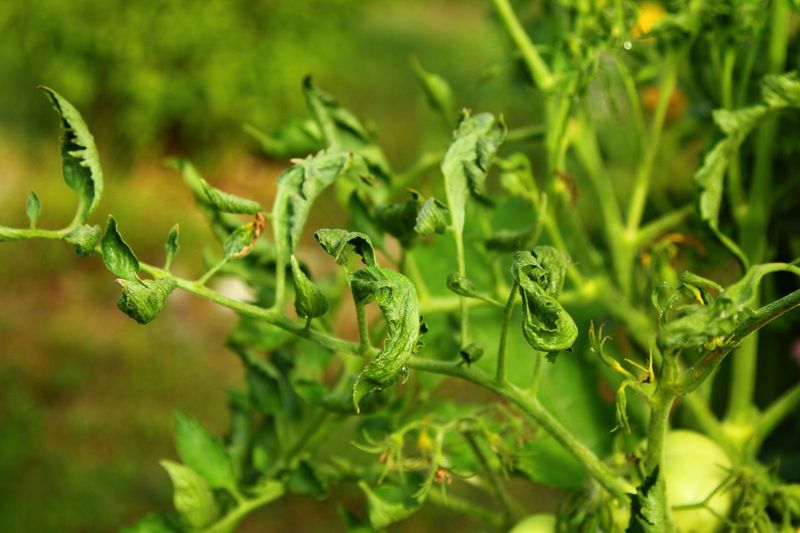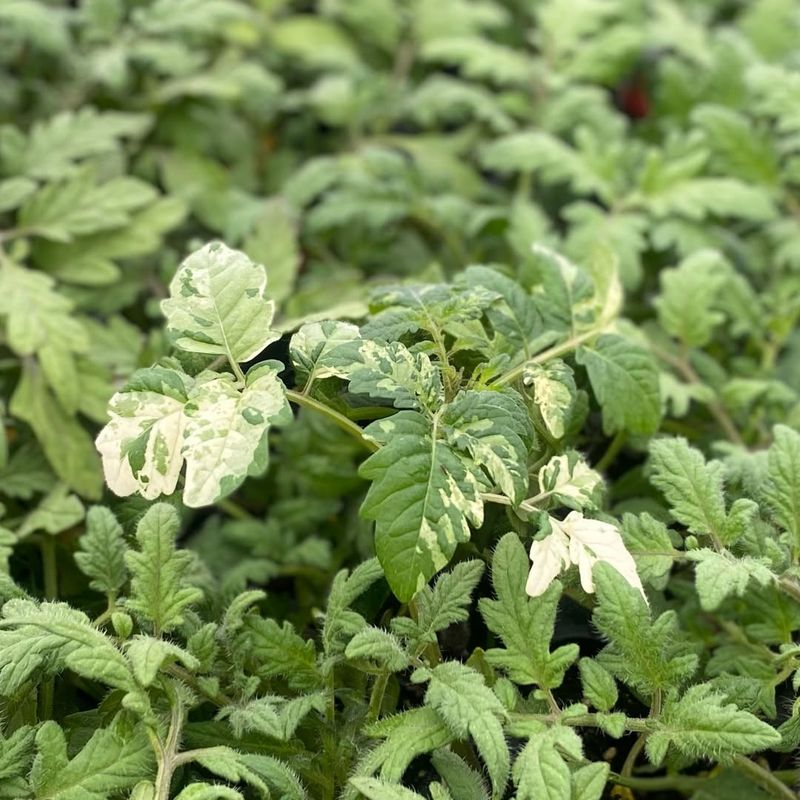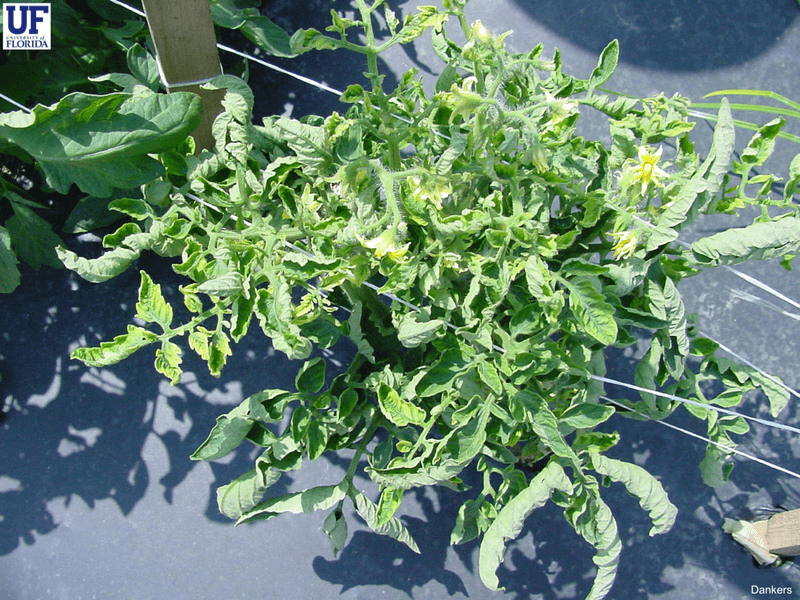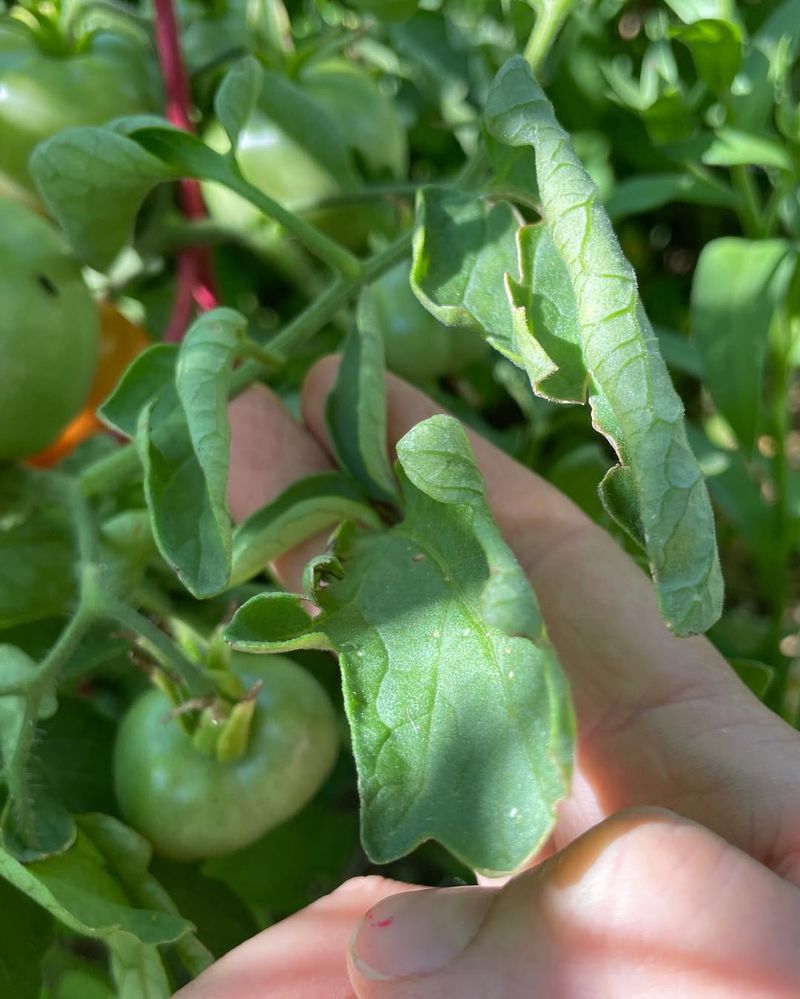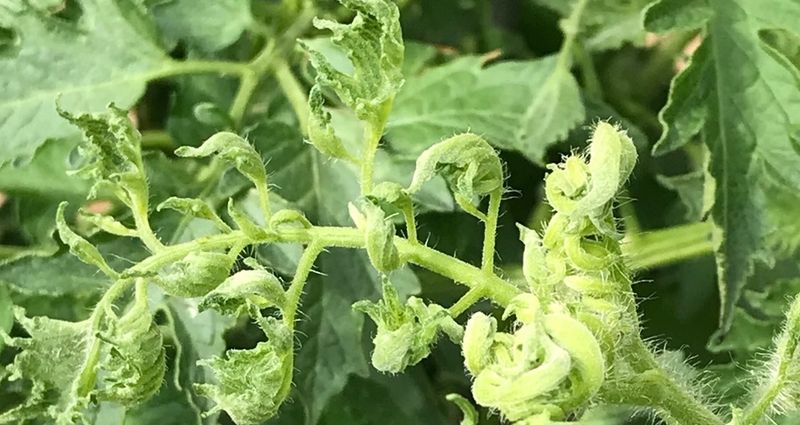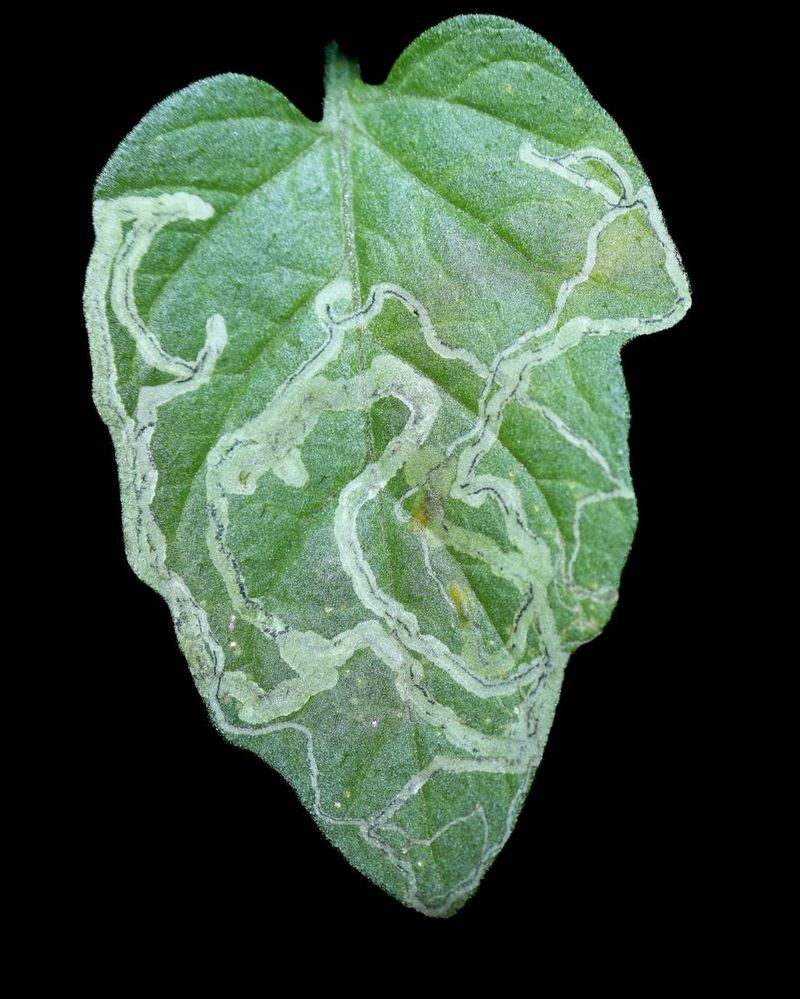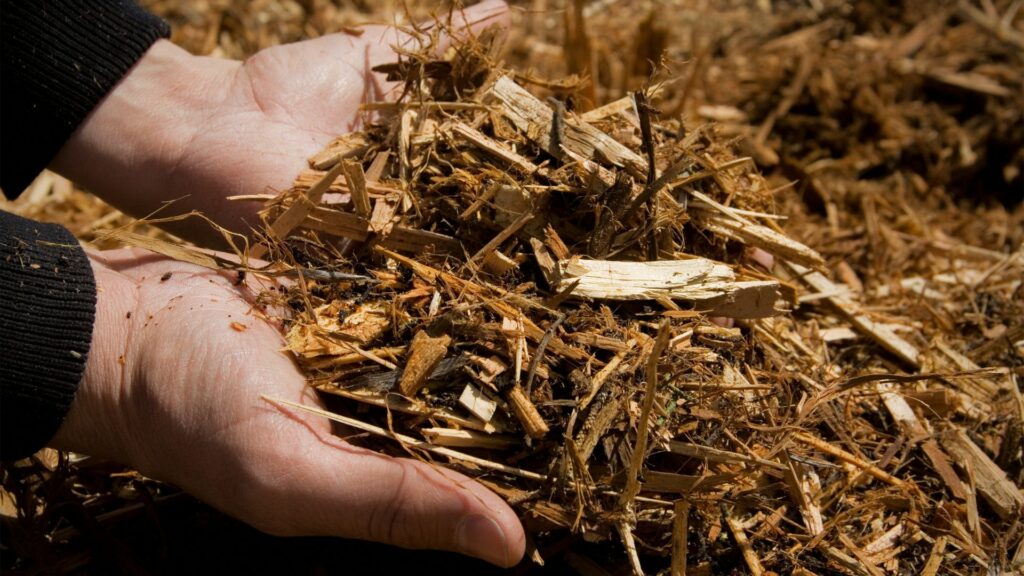When you walk into your garden, hoping to see strong, flourishing tomato plants, it’s pretty disheartening to spot leaves curling up like tiny green question marks. I’ve been there—staring at my plants, wondering what went wrong. But over time, I’ve learned that nature rarely stays silent.
Those curling leaves? They’re more than just a cosmetic issue—they’re your tomato’s way of saying, “Hey, something’s off!” Whether it’s stress, pests, or just a quirky reaction to the weather, each twist and fold tells a story if you know how to read it.
So let’s take a closer look at what might be going on. These common causes behind leaf curl might just help you solve the mystery—and get your tomato plants back to their juicy, thriving selves.
1. Overwatering
Tomato plants are picky when it comes to water, and overwatering can lead to curling leaves. When the roots are sitting in soggy soil, they can’t breathe properly, leading to poor nutrient uptake and stunted growth.
This lack of oxygen causes the leaves to curl and droop. To fix this, ensure your pots or garden beds have excellent drainage and always check the soil’s moisture before watering.
If you notice the soil is wet, wait a day or two before watering again. Consistent, deep watering is far better than frequent shallow watering.
2. Underwatering
On the other hand, not enough water can also cause your tomato leaves to curl. When plants don’t get enough hydration, they start to conserve moisture by curling their leaves to reduce surface area.
This reduces the amount of water lost to evaporation, but it also slows down the plant’s growth. To fix this, check the soil frequently to ensure it’s moist but not soggy.
Water your plants consistently and deeply, ensuring the soil is moist all the way down to the roots. A regular watering schedule will help keep your plants happy and hydrated.
3. Pests
Tomatoes are often targeted by pests like aphids, whiteflies, and spider mites, which can cause leaves to curl. These insects feed on the plant’s sap, weakening the tomato and causing stress.
The result? Curling, discolored leaves and overall poor plant health. To solve this, inspect your plants regularly for pests and remove them by hand or use an insecticidal soap.
For larger infestations, consider introducing natural predators like ladybugs to control pest populations. A little pest management can go a long way toward protecting your tomatoes.
4. Disease
Fungal and bacterial infections can cause tomato leaves to curl as well. Common diseases like early blight and verticillium wilt cause the plant to struggle, leading to distorted growth and curled leaves.
To prevent disease, practice crop rotation, avoid overhead watering, and remove infected leaves immediately. Consider using fungicides or bactericides if necessary.
Healthy soil and good garden hygiene are key in preventing these diseases from spreading. Removing affected plants early helps limit the damage and keeps your tomatoes safe.
5. Nutrient Deficiency
A lack of key nutrients like potassium, magnesium, or nitrogen can cause tomato leaves to curl. Nutrient deficiencies often show up as yellowing, curling, and stunted growth, making it clear your plant needs a boost.
The easiest fix is to use a balanced fertilizer that includes these nutrients. Make sure to follow the instructions for application to avoid over-fertilizing, which can cause other problems.
If the soil is lacking in specific nutrients, you can also amend it with compost or organic matter to restore balance. Regular soil testing can help prevent nutrient deficiencies before they start.
6. Excessive Heat
Extreme heat is another common cause of curling tomato leaves. When temperatures rise above 90°F (32°C), tomatoes may react by curling their leaves to reduce water loss through transpiration.
To protect your plants from heat stress, provide some shade during the hottest part of the day using shade cloth or tall plants. You can also mulch around the base of your plants to help retain moisture.
Water early in the morning to give your plants a head start for the day’s heat. Keep your garden cool and hydrated to keep your tomatoes happy during the summer months.
7. Excessive Sunlight
While tomatoes love the sun, too much direct sunlight can scorch their leaves, leading to curling and browning. Intense sunlight can also cause dehydration, as the plant struggles to keep up with moisture loss.
To fix this, provide shade during the hottest parts of the day, especially if you live in a particularly sunny area. Some plants, like basil, can act as natural shade for tomatoes.
Regular watering and mulching also help keep the roots cool and maintain adequate moisture levels. This will allow your plants to get the sunlight they need without risking damage.
8. Poor Air Circulation
Tomatoes need good airflow to stay healthy, and poor air circulation can lead to stress and curling leaves. When air is stagnant around your plants, humidity builds up, creating an ideal environment for mold and mildew.
To improve airflow, space your tomato plants properly and avoid overcrowding. Pruning lower branches and leaves will also help air circulate more freely.
Ensure your garden area is not too cluttered with other plants or structures that block airflow. A little breathing room can prevent many tomato problems, including curled leaves.
9. Root Damage
If your tomato plant’s roots are damaged, it can affect how the plant absorbs water and nutrients, leading to curling leaves. Root damage can happen during transplanting, improper handling, or when the plant is disturbed too often.
To prevent root damage, handle plants gently when transplanting and make sure the roots have plenty of space to grow. Be mindful of soil compaction, as it can also restrict root growth.
Healthy, undisturbed roots will ensure your tomatoes get the nutrients they need to grow strong and free of curled leaves.
10. Transplant Shock
Moving a tomato plant to a new location can stress the plant and cause its leaves to curl. Transplant shock happens when the plant’s roots are disturbed or exposed to different growing conditions.
To minimize transplant shock, water the plant thoroughly before moving it and make sure to acclimate it gradually to its new environment. If possible, avoid moving plants during extreme temperatures.
Ensure the new planting area has proper soil and sunlight for your tomatoes to thrive. With a little extra care during the transition, your tomatoes will bounce back in no time.
11. Herbicide Damage
Herbicides, particularly those containing glyphosate, can drift into your tomato patch and cause curling leaves. Even small amounts of herbicide exposure can damage the plant, leading to distorted growth.
If you suspect herbicide damage, thoroughly wash the affected plants with water to remove any residual chemicals. Consider using organic methods to control weeds instead of harsh chemicals.
In severe cases, you may need to remove the affected plants to prevent further damage. Prevention is key, so keep herbicides away from your tomato garden.
12. Wind Stress
Strong winds can cause tomato plants to bend and break, leading to curling leaves as the plant responds to physical stress. Wind also causes dehydration, which can further stress the plant.
To reduce wind stress, provide a windbreak by planting taller plants or installing a fence around your tomato garden. Regularly check your plants for signs of damage and stake them if necessary.
Water deeply and consistently to ensure your tomatoes have enough moisture to withstand windy conditions. Protect your plants from the elements, and they’ll thank you with healthy growth.
13. Soil Compaction
When the soil is too compacted, it prevents the roots from expanding properly, which can cause curling tomato leaves. Compacted soil limits oxygen flow and makes it harder for plants to take in nutrients and water.
To fix this, loosen the soil before planting by adding compost or organic matter to improve drainage and texture. Avoid stepping on the soil around your plants, as this can lead to further compaction.
If the soil is heavy or clay-like, consider planting in raised beds to give your tomatoes more room to grow and spread their roots. Healthy, well-aerated soil is essential for thriving tomatoes.
14. Improper Pruning
Pruning your tomato plants improperly can lead to stress and curling leaves. Over-pruning can remove too many leaves, limiting the plant’s ability to photosynthesize and grow effectively.
To avoid this, prune your tomatoes sparingly, focusing only on dead or diseased leaves. Be careful not to remove too many branches, as this can reduce the plant’s overall strength.
Use clean, sharp tools to prune, and make sure you’re cutting in the right places to promote healthy growth. A little care with pruning can keep your tomatoes strong and free of curled leaves.
15. Low Humidity
Tomatoes thrive in moderate humidity, but if the air is too dry, it can cause the leaves to curl and dry out. Dry conditions increase transpiration, forcing the plant to lose moisture faster than it can take it up.
To increase humidity around your plants, consider using a humidifier or placing a shallow tray of water near the garden. You can also mist the plants lightly in the morning to keep the air around them moist.
Make sure your plants are watered consistently to reduce the strain of low humidity. Creating a more humid environment can help keep your tomatoes happy and healthy.
16. Over-Fertilization
Excessive fertilization can burn your tomato plants, causing their leaves to curl and turn yellow. Overuse of high-nitrogen fertilizers can lead to rapid, weak growth that the plant cannot support.
To fix this, avoid fertilizing your tomatoes too frequently. Stick to a balanced fertilizer and follow the recommended application rates.
If you’ve over-fertilized, consider flushing the soil with water to remove excess nutrients. Proper fertilization will keep your tomatoes strong and prevent curling leaves.
17. Virus Infection
Viruses like tomato yellow leaf curl virus (TYLCV) can cause severe damage to your plants, including curling leaves. These viruses are often transmitted by insects like whiteflies and can be difficult to control once established.
To prevent viral infections, control insect populations using natural predators or insecticidal soaps. If you notice symptoms of viral infection, remove affected plants immediately to prevent spread.
Always source virus-free seeds or seedlings to reduce the risk of introducing new infections into your garden. Early detection and removal can help protect your other plants.
18. Improper Watering Techniques
Watering your tomatoes improperly can lead to curling leaves. Using a sprinkler system or watering from above can cause the leaves to remain wet, leading to fungal issues.
Instead, water at the base of the plant, directly on the soil, to avoid wetting the leaves. Deep watering encourages strong root growth and helps the plant resist stress.
Using soaker hoses or drip irrigation is an excellent way to water efficiently without causing excess moisture on the foliage. Healthy watering habits will keep your tomatoes in top shape.
19. Poor Drainage
If the soil around your tomato plants doesn’t drain well, it can cause the roots to sit in water, leading to root rot and curling leaves. Poor drainage traps excess moisture, limiting oxygen flow to the roots.
To improve drainage, amend your soil with organic matter like compost or plant in raised beds. Make sure to use containers with drainage holes if growing in pots.
Proper drainage will keep your tomatoes healthy by ensuring they don’t suffer from waterlogged roots. Good drainage prevents many common tomato problems.
20. Leaf Miners
Leaf miners are small insects that burrow into tomato leaves, causing them to curl and discolour. These pests damage the leaf tissue, affecting the plant’s ability to photosynthesize.
To control leaf miners, remove and destroy affected leaves. You can also use insecticidal soap or neem oil to kill the larvae.
Encourage natural predators like parasitic wasps to control leaf miner populations. Keeping your garden clean and pest-free will reduce the chance of infestations.
21. Too Much Nitrogen In The Soil
While tomatoes need nitrogen to thrive, too much of it can cause problems, including curled, lush, dark green leaves and little to no fruit. Excess nitrogen encourages vigorous leafy growth at the expense of flowers and fruit development.
If you suspect nitrogen overload, reduce or stop using high-nitrogen fertilizers. Switch to a balanced or phosphorus-rich fertilizer that supports flower and fruit production. Adding carbon-rich materials like straw or sawdust can also help absorb excess nitrogen.
Monitoring your fertilizer routine and soil health ensures your tomato plants stay productive and don’t just grow leaves that curl from overindulgence.
22. Contaminated Compost Or Mulch
Sometimes, the problem isn’t in your plant but in what you’ve fed it. Compost or mulch made from grass clippings or hay treated with persistent herbicides like aminopyralid or clopyralid can cause tomato leaves to curl, twist, or become deformed.
Even in small amounts, these residues can linger and harm sensitive crops like tomatoes.
To avoid this, only use compost and mulch from trusted, untreated sources. If you suspect contamination, try a bioassay test: plant a few tomato seeds in the compost before applying it broadly. If they sprout with curled or twisted leaves, it’s best to discard that batch.

